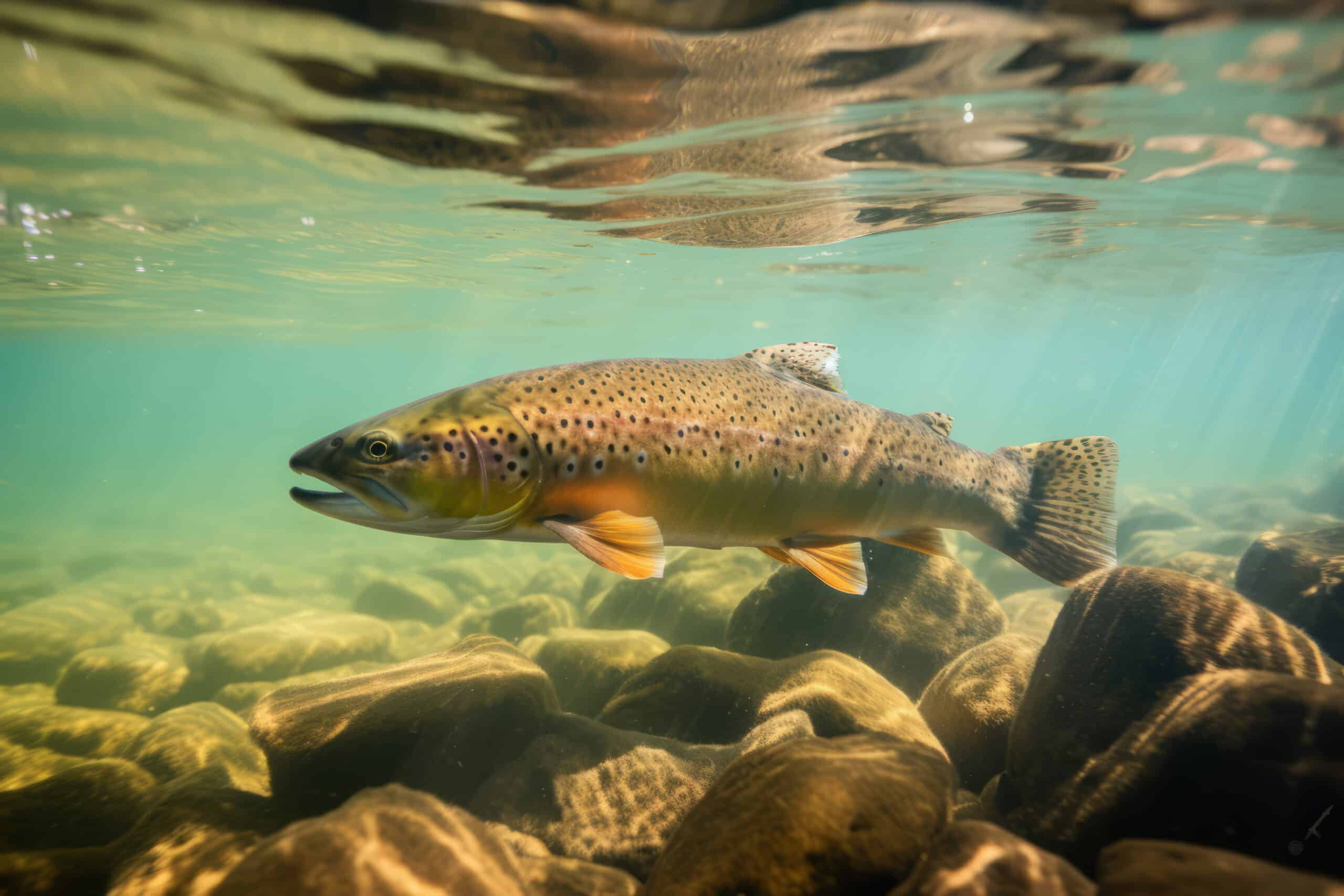What Color Can Trout Not See?
Key Takeaways
- Trout can see a wide range of colors, but their ability to perceive certain colors is limited.
- Trout’s ability to detect colors is significantly reduced within 12 feet. Beyond this distance, colors start to lose their vibrancy and become less distinguishable to trout.
- Using contrasting colors can help improve visibility and attract trout’s attention when selecting lures or bait for trout fishing.
Trout, like many other fish, have a unique visual perception that differs from humans. They can see a wide range of colors, but their ability to perceive certain colors is limited. So, what color can trout not see? Let’s delve into this fascinating topic and explore the visual world of trout.
Trout’s Color Vision
Trout have a keen sense of color vision, but their perception of colors varies depending on different factors such as water clarity and distance. In clear waters, trout can see colors like red, orange, and yellow best. These vibrant colors stand out and are easily distinguishable to trout.
However, when it comes to darker waters, trout have a better ability to perceive colors like yellow and green. These colors provide better contrast and visibility in low-light conditions. It’s important to note that the visibility of colors may vary depending on the specific conditions of the water and the surrounding environment.
The Limitations of Trout’s Color Perception
While trout can see a wide range of colors, there are limitations to their color perception. According to research, trout’s ability to detect colors is significantly reduced within 12 feet. Beyond this distance, colors start to lose their vibrancy and become less distinguishable to trout.
One interesting aspect of trout’s color vision is their perception of red. While trout can see red, the color appears brighter to them at a closer look and turns black at a greater distance. This phenomenon is due to the way light interacts with water, causing the red color to lose its visibility as distance increases.
Importance of Contrast for Trout Visibility
Given the limitations of trout’s color vision, it becomes crucial to consider contrast when it comes to lures and bait. Since trout’s ability to detect colors diminishes with distance, using contrasting colors can help improve visibility and attract their attention.
Contrast refers to the difference in color between an object and its background. By using lures or bait with high contrast, such as a combination of light and dark colors, anglers can increase the chances of trout noticing and striking at their offerings.
Conclusion
So, what color can trout not see? While trout have a remarkable ability to perceive a wide range of colors, their color vision is limited within certain distances. Colors like red may appear brighter up close but turn black at a greater distance. It’s important to consider water clarity, lighting conditions, and contrast when selecting lures or bait for trout fishing.
Related Websites:
FAQs:
Q: How do trout perceive colors differently than humans?
Trout perceive colors differently than humans due to the presence of different cone cells in their eyes. They have a higher number of cones sensitive to ultraviolet light, which allows them to see a broader spectrum of colors that are invisible to us.
Q: What colors can trout not see?
Trout have difficulty seeing colors in the red and orange spectrum, as these colors appear more like shades of gray to them.
Q: Why do trout have difficulty seeing certain colors?
Trout have a limited number of cone cells responsible for perceiving colors. Their eyes are more sensitive to blues and greens, while reds and oranges appear less vivid or even invisible to them.
Q: Why is selecting the right lure color important for trout fishing?
Selecting the right lure color is crucial in trout fishing because it increases the visibility and attractiveness of the lure to the trout. By using colors that are more visible to trout in different fishing conditions, anglers can significantly improve their chances of success.
Q: What factors apart from color influence trout in fishing?
Apart from color, motion, scent, and presentation techniques play a significant role in attracting or repelling trout. It’s important to take a holistic approach and consider these factors along with lure color selection for successful trout fishing.






